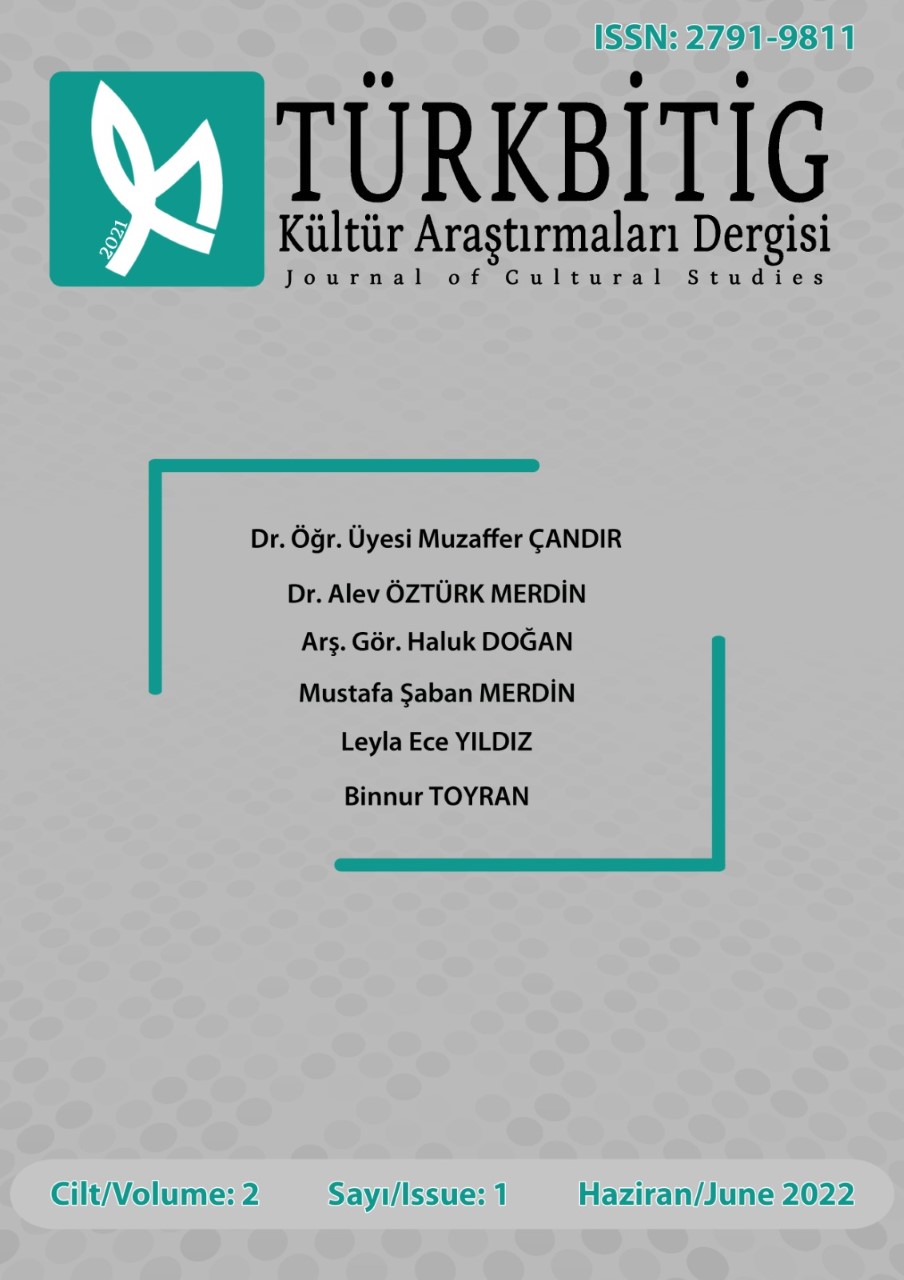Author :
Abstract
Kültür, toplumların alt kimliğinin oluşumuna da hizmet etmektedir. Bir yörenin ya da durumun kimliği, birbiriyle ilişki içinde bulunan birçok alt kimlikten oluşmaktadır. Şehirlerin kimlik oluşumunda kültürel, coğrafi ve sosyal imgeler, alt kimliğin belirlenmesinde etkilidir. Toplumsal hayatın sürekliliğini sağlayan, toplum belleğinde kalıcı hâle gelmiş olan inanç, kural ve âdetlerin bir sonraki kuşağa aktarımı geleneğin sürdürülebilirliği ile mümkündür. 13. yüzyılda Ahi Evran-ı Veli tarafından Anadolu topraklarında kurumsal bir kimlik kazandırılan Ahilik kurumu, dinî, ekonomik ve sosyo-kültürel kodların gizli ve açık taşıma işlevini üstlenerek, geleneğin sürdürülebilmesi noktasında önem arz etmektedir. Bünyesinde barındırdığı açık ve gizli işlevler vasıtasıyla gelenek aktarımını Anadolu’da kutlama ve törenlerle devam ettirmektedir. 1988 yılından itibaren Kültür ve Turizm Bakanlığı’nın hazırlamış olduğu yönetmelik çerçevesinde Kırşehir merkez olmak üzere, Ahilik geleneğini yaşatmak amacıyla Ahilik Kültürü Haftası adı altında kutlamalar yapılmaktadır. Çalışmamızda halkbilimi için önem arz eden Kırşehir ili ve Mucur ilçesi örneklem alanı olarak belirlenerek Ahilik kutlamaları ve şenlik geleneğinde var olan kültürel unsurlar işlevsel halk bilimi kuramı çerçevesinde değerlendirilecektir.
Keywords
Abstract
Culture also serves the formation of sub-identities of societies. The identity of a region or situation consists of many sub-identities that are in relation with each other. Cultural, geographical and social images are effective in determining the sub-identity in the identity formation of cities. The transfer of beliefs, rules and customs that ensure the continuity of social life and that have become permanent in the memory of the society to the next generation is possible with the sustainability of the tradition. The Ahi organization, which was given an institutional identity in Anatolian lands by Ahi Evran-ı Veli in the 13th century, is important for the continuation of the tradition by undertaking the function of carrying the religious, economic and socio-cultural codes secretly and openly. It continues the transmission of tradition with celebrations and ceremonies in Anatolia through the overt and hidden functions it contains. Since 1988, within the framework of the regulation prepared by the Ministry of Culture and Tourism, celebrations are held under the name of Ahi-Order Culture Week in order to keep the Ahi-order tradition alive, in the center of Kırşehir. In our study, the Mucur district of Kırşehir province, which is important for folklore, will be determined as the sample area and the cultural elements in the tradition of Ahi-order celebrations and festivals will be evaluated within the framework of functional folklore theory.
Keywords
- ASSMAN, J. (2015). Kültürel Bellek (Eski Yüksek Kültürde Yazı, Hatırlama ve Politik Kimlik, çev: Ayşe Tekin, Ankara: Ayrıntı Yayınları.
- ATLI, Sagıp (2015). “Somut Olmayan Kültürel Mirasa Bir Örnek: Balıkesir Pamukçu Erfene Sohbet Toplantıları”. Uluslararası Sosyal Araştırmalar Dergisi, 8/40, ss. 7-25.
- ATLI, Sagıp (2018). “Türkiye’deki Geleneksel Sohbet Toplantıları Üzerine Bir Değerlendirme”. Millî Folklor, 117, ss. 88-101.
- AYDOĞAN, Hatice Aycan (2012). Türk Kültüründe Bereketi Artırmaya Yönelik İnanış ve Uygulamalar, Yayımlanmamış Yüksek Lisans Tezi, Balıkesir: Balıkesir Üniversitesi Sosyal Bilimler Enstitüsü.
- BASCOM, William. R. (2005), “Folklorun Dört Işlevi”. Halkbiliminde Kuramlar ve Yaklaşımlar 2, Ankara: Geleneksel Yayıncılık, ss. 125-151.
- ÇELEPİ, Mehmet Surur (2017). Türk Kültür Evreninde Toy Denizli Örneği, Konya: Kömen Yayınları.
- ÇOBANOĞLU, Özkul. (2012). Halkbilimi Kuramları ve Araştırma Yöntemleri Tarihine Giriş. Ankara: Akçağ Yayınları.
- ÇOBANOĞLU, Özkul (1999), “Halkbilimi Açısından Gelenek, Turizm ve İcad Edilmiş Gelenek Bağlamında Ayvalık Şeytan Sofrası Örneği”, I. Balıkesir Kültür Araştırmaları Sempozyumu Bildirileri, 01-02 Haziran 1998, ss. 373-378.
- EKİCİ, Metin (2008). “Türk Halk Kültürü Araştırmalarında Dün, Bugün ve Yarın”, Motif Akademi Halkbilimi Dergisi, 1/1, ss. 11-26.
- GÜNAYDIN, Y. T. (2015), Ahilik Araştırmaları 1913-1932, Ankara: Türk Tarih Kurumu
- GÜVENÇ, Bozkurt (1996), Türk Kimliği, İstanbul: Remzi Kitabevi.
- IŞIK, Oğuz (1999). “Kenti Düşünmek, Kent Üzerine Düşünmek”, Toplum ve Bilim, 14/3, s. 162.
- KAFESOĞLU, İbrahim (1980), Eski Türk Dini, Ankara: Kültür Bakanlığı Yayınları.
- KÖKSAL, M. Fatih (2008), Ahi Evran ve Ahilik, Kırşehir: Kırşehir Valiliği Kültür Yayınları.
- OĞUZ, Öcal (2013). Somut Olmayan Kültürel Miras Nedir?, Ankara: Geleneksel Yayınları.
- ONG, Walter. J. (1995). Sözlü ve Yazılı Kültür Sözün Teknolojileşmesi. çev: S. Postacıoğlu Banon, İstanbul: Metis Yayınları.
- ÖRNEK, Sedat Veyis (2000). Türk Halkbilimi, Ankara: Kültür Bakanlığı Yayınları.
- ÖZDEMİR, Nebi (2005). Türk Eğlence Kültürü, Ankara: Akçağ Yay.
- ÖZDEMİR, Nebi. (2012). Kültür Ekonomisi ve Yönetimi (Seçki). Ankara: Hacettepe Yayınları.
